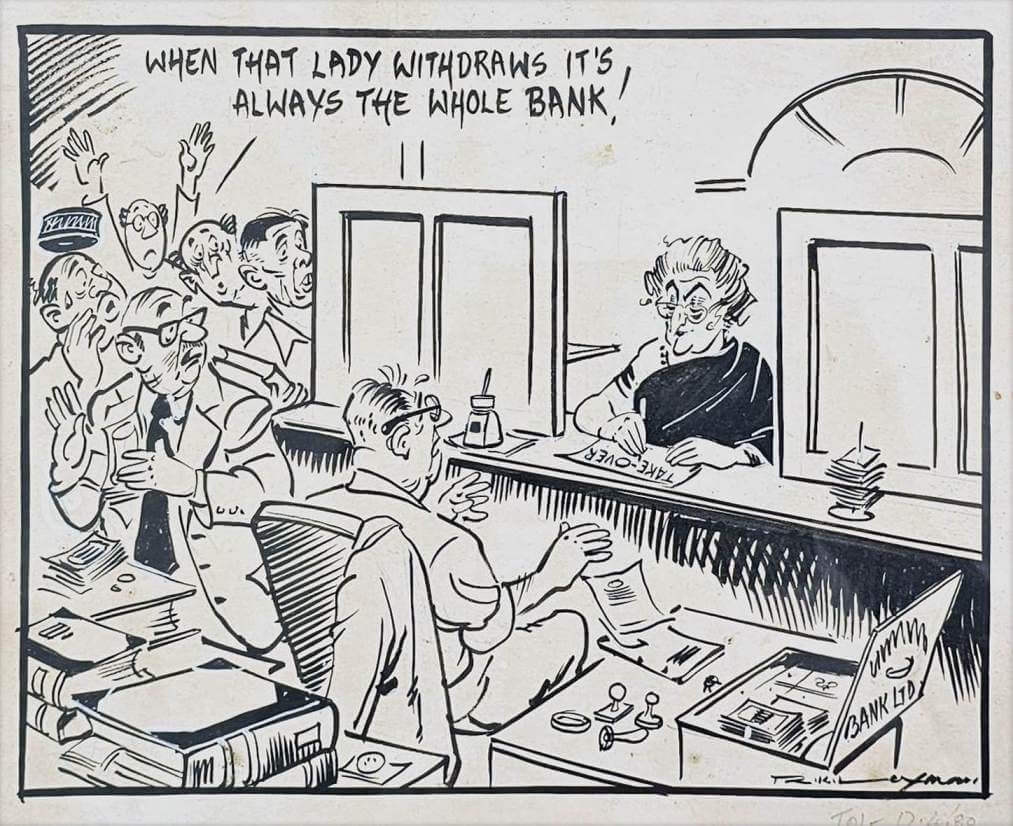Born in Mysore (now Mysuru), Laxman was the youngest of seven siblings, one of whom was author RK Narayan. Laxman studied art at the University of Mysore, where he began working as a part-time cartoonist, illustrating his brother’s stories for The Hindu and creating political cartoons for the magazine Swatantra. He also began making cartoons for a regional monthly called Korvanji. He also worked at an animation film unit at Gemini Studios, Madras (now Chennai), for six months.
After his education, Laxman moved to Bombay seeking new opportunities and started working as a cartoonist for the investigative weekly Blitz. Soon after, in 1946, he began his first full-time position as a cartoonist with the Free Press Journal. Here, he worked alongside the politician Bal Thackeray, who worked as a cartoonist at the time. He also contributed work to Bharat Jyoti and the State’s People Supplement.
Laxman began working at The Times of India in 1947, first contributing to the magazine Illustrated Weekly of India, which was a part of the Times Group. Following a political cartoon that appeared in the Evening News of India, he was tasked with creating similar cartoons for the front page of The Times of India, which led to the column You Said It. The comic strip ran for over five decades, from 1951 onwards.
Laxman’s most famous character, the Common Man, was an elderly, bespectacled man in a checkered coat and dhoti. The Common Man came to embody the plight of the ordinary citizens of India as a witty but often helpless spectator to the political developments that impacted his everyday life. The black-and-white comic strip also featured other characters such as the Quintessential Politician and the Common Woman, the Common Man’s wife. The line quality and brushstrokes were inspired by the works of British humorist David Low, as well as the artwork in magazines such as Punch, Strand and Bystander, which Laxman had grown up reading.
Apart from illustrations and cartoons, Laxman wrote two novels — The Hotel Riviera (1988) and The Messenger (1993) — as well as an autobiography, The Tunnel of Time (1998). He was awarded the Ramon Magsaysay Award in 1984, the Padma Bhushan in 1973 and the Padma Vibhushan in 2005.
Laxman died in Pune in 2015.










